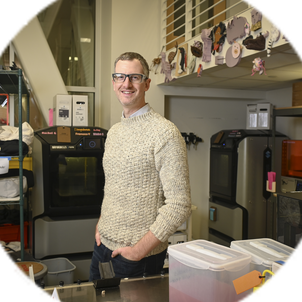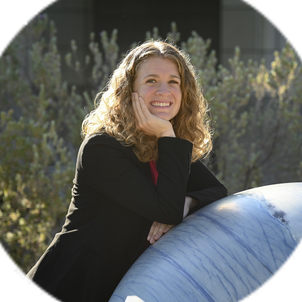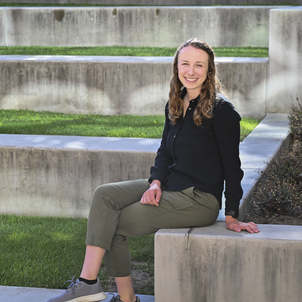I was living in St. Louis when I applied to undergraduate programs, and it was important to me that my college education be affordable. I wanted to be an architect, but the University of Missouri didn’t have an architecture program. When the University of Kansas offered in-state tuition and additional scholarship funds to switch to architectural engineering, I became an architectural engineer.
I initially fell in love with architectural design, but the more I was involved in the engineering aspects of my program, the more I became attracted to the impacts of structural engineering design. I found the problem-solving addictive. Even now, my best days are when I work on a problem, go to sleep, dream about it, then wake up to work on it again. I become infatuated with the problem, and I love trying to solve it.
I’m interested in how structures move and how we model and represent that movement. Traditionally, that effort has focused on how our cities and buildings respond to natural hazards, such as earthquakes and tsunamis. Lately, I’ve broadened my focus to better understand the behavior of marine renewable structures, such as floating offshore wind turbines.
I mostly study earthquakes and wave loading conditions, but climate change is driving more disastrous hurricanes, increased flooding, and catastrophic wildfires, all of which increase the risk to our civil infrastructure. We’ve always thought about how to make safe structures, but now we have to be flexible enough to account for these changes. How do we simulate our cities, the people in them, and the effects of structural performance? How do we simulate the interconnectedness of something so complex and uncertain?
As an example, one of my projects now is attempting to accelerate our structural simulations by incorporating graphics processors to enable real-time simulations. The speed of our models is everything; having this information could allow us to run more complex models in less time, and foster more innovative structural designs.
I like this work because I feel the projects I work on have a tangible, practical benefit. Ultimately, I hope that the work I do will make its way into building codes and design methods that the industry uses to create better-performing structures that make us more resilient against extreme hazards. I’m imagining a world where natural disasters aren’t so disastrous. That would be pretty incredible.
Related spotlights

Dan Somen

Sonia Martin


